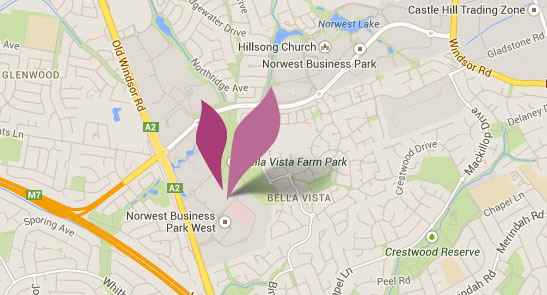What to expect during abdominoplasty (tummy tuck) recovery
What to expect during tummy tuck recovery
Sydney tummy tuck
Abdominoplasty, also known as a tummy tuck, is a procedure that addresses issues with the appearance of the abdomen, including loose skin as well as separation of the muscles. Many people choose this procedure after massive weight loss, or after having kids.
It’s important for patients to understand what the recovery process will be like, so that they can plan around it. We will give you detailed and personalised instructions after your surgery, but many people prefer to know what to expect ahead of time. Here are some general guidelines about tummy tuck recovery. Keep in mind that each patient’s procedure is a little different, so your needs after surgery may also differ somewhat.
Drains and compression garments
Abdominoplasty involves significant manipulation of the muscles, fat tissue, and skin of the entire abdomen. Because of this, there can be significant swelling after the procedure, and fluid can collect in the area. Most patients will wake up with drains in the abdomen, which are soft plastic tubes that allow fluid to drain out. The drains will stay in until they’re no longer leaking significant amounts of fluid. For most people, this takes one to two weeks, but it’s sometimes a little shorter or longer than this.
Rarely, Dr Gavin Sandercoe will choose to perform a drain free closure. This is a reasonable option for thin patients who are not having any adjunctive liposuction. The undersurface of the abdominal fat is sutured onto the muscle wall to prevent fluid from accumulating and causing mischief. These quilting sutures can sometimes make the recovery discomfort last a little longer than would occur if drains had been placed.
Dr Gavin Sandercoe plans to have all his tummy tuck patients spend at least two nights in the hospital after their procedure. This allows you to be monitored to ensure that your healing is going as planned. Most patients go home the on the third day, but a few people need to stay a bit longer in the hospital to ensure their safety. In most circumstances, it is the ward physiotherapists who guide when discharge home is safe. It’s much better for you to be cared for by professional nurses in this early period, rather than trying to manage things yourself at home.
You’ll wake up wearing an abdominal compression garment, which is an elastic garment that fits around your belly. You’ll need to wear it full time for 6 to 8 weeks after your surgery. You can take it off to shower, but it should always be worn otherwise. The compression garment helps to minimise swelling and fluid buildup. It also keeps the skin, fat, and other tissues in place as they heal, helping to ensure the quality of your long-term results. It’s important to be diligent about wearing your compression garment to get the best possible results from your tummy tuck.
Body position
During the tummy tuck, your body will be slightly bent at the waist. This allows Dr. Sandercoe to remove the right amount of tissue, and to close the incision without too much tension across it.
After a tummy tuck, you’ll want to maintain this slightly bent position during the early healing period. You should straighten out gradually within your discomfort levels. The internal suturing will let you know if you are trying to straighten out too quickly.
Older techniques of abdominoplasty closure can be more painful to straighten up with, and early straightening can lead to widened scars. With Dr Gavin Sandercoe’s technique of abdominoplasty closure, these are rarely a problem.
Return to exercise
Many of our patients are interested in fitness, and they want to get back to working out as soon as possible. However, it’s important to give the body enough time to recover after a tummy tuck. The muscles, fat tissue, and skin of the abdomen are all affected by a tummy tuck, and you need to allow these tissues to heal before you start to put them under strain.
In general, you’ll need to plan to take the first few weeks completely off exercise. During this time, swelling is a significant concern. Exercise raises your blood pressure, which can lead to increased swelling as well as a risk of bleeding. All you should be doing in the early period is gently walking. (Make sure that you walk, to prevent blood clots.)
By the 4-week mark, an increase in exercise that does not stress the repair of rectus separation is ok. Think exercise bikes or ellipticals, light weights. Running and gym classes should be delayed until the 8-week mark when the rectus divarication repair is strong and able to cope with some work.
About six to eight weeks after your procedure, you’ll be ready to start doing more cardio, like running. Weightlifting and abdominal specific exercises can be started at this point but take it easy and listen to your body. If things are abnormally sore after an easy workout, that is your body saying to have a few days rest and come back to that idea next week.
Sydney tummy tuck
In general, about three months after a tummy tuck, most patients are back to feeling normal. The healing process of the incision will continue for up to a year or even longer, so your scar will continue to change over this period, becoming paler and flatter.
If you’re considering having a tummy tuck, we invite you to come in for a consultation with Sydney Specialist Plastic Surgeon Dr Gavin Sandercoe. Although the procedure does require a significant recovery period, it’s also the only way to address issues like muscle separation and excess loose skin on the abdomen. Dr Gavin Sandercoe will be happy to examine you and let you know what results you could likely expect if you choose this procedure. Please contact our office to book your appointment.





